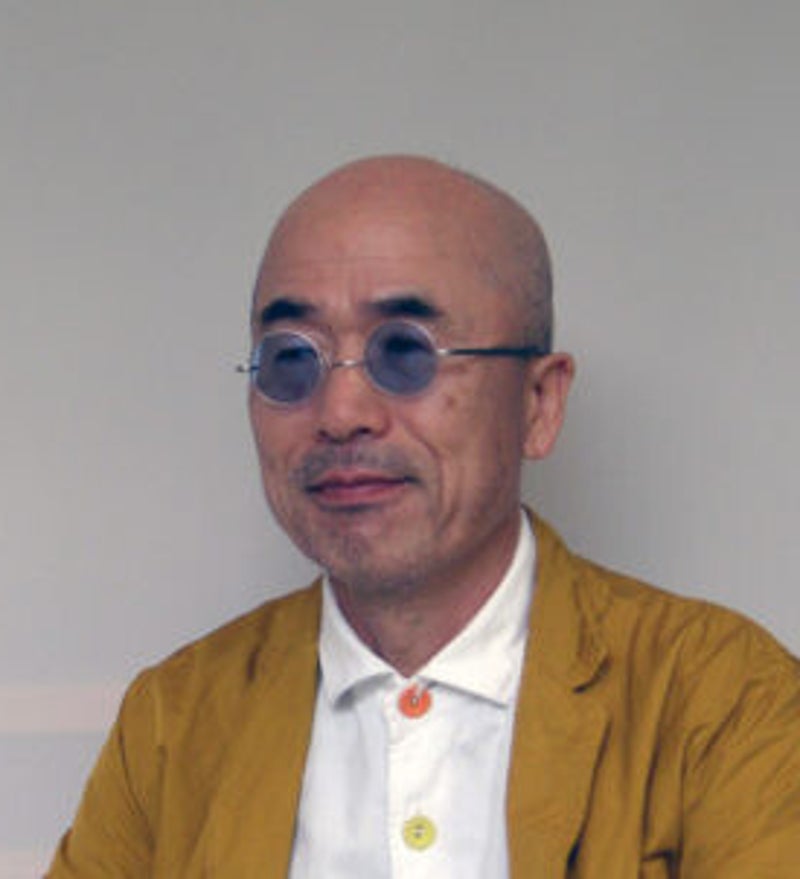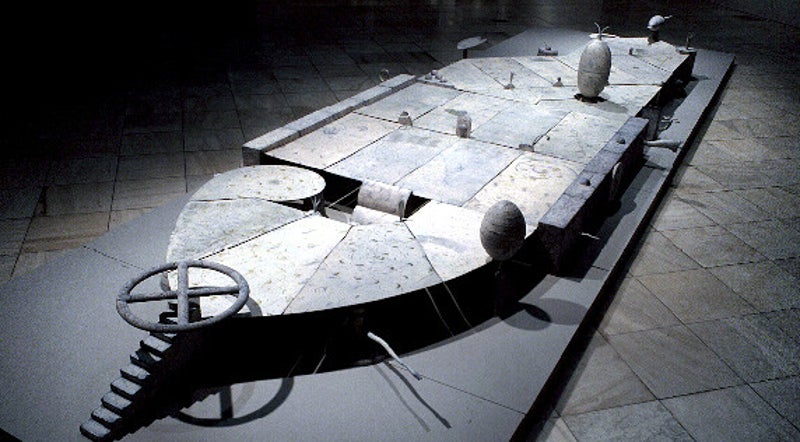97. Matsumoto Hideo 松本ヒデオ

Matsumoto Hideo was born in Kyoto in 1951. He first studied agriculture at the Tokyo University of Agriculture and Technology. He then studied at the Kyoto City University of Arts, Department of Crafts and further studies at the Kecskemét International Ceramics Studio (Hungary) and the Academy of Arts in Stuttgart (Germany). At Kyoto City University, he was trained by Kazuo Yagi (1918-1979) and Osamu Suzuki (1926-2001), both founders and leaders of the Sōdeisha, an influential avant-garde group that sought to blur the line between pottery and sculpture. During his time in Europe in Hungary and Germany, he became even more convinced of the importance of these new concepts, and the ideas of the Sodeisha movement would have a lasting influence on the further development of Matsumoto Hideo as a ceramicist, but especially as an artist who used ceramics as a medium to express his unique worldview through large works and intallations. As a lecturer at Kyoto Seika University, where he was appointed professor in 2001, Matsumoto Hideo would also share this with younger generations.
Matsumoto Hideo gained fame with the series "Kakomi totte shō deru," freely translated "Surround yourself and win a prize," which he would create and exhibit beginning in the 1990s and for decades thereafter. The series was inspired by the ancient Japanese garden philosophy of ``creating a private garden space by drawing boundaries in a natural landscape.'' According to Matsumoto Hideo, in the information society we live in, we do not reduce outside information, but focus on things that come into our domain, such as personal experiences, knowledge and materials, depending on time and environment. For him this is an important theory, he wants to create thematic boundaries in the information landscape with his works. For this purpose, he created large works of plate-like sections of porcelain clay on drywall or plywood, creating a large-scale panorama that he compares to a mental landscape or a landscape in the near future. Matsumoto Hideo's creative world thus shows itself in these large-scale installations, whose individual parts become objects again, creating fantastic forms through their chains and reciprocal effects. Similar installations he would continue to make in the decades that followed.
Matsumoto Hideo is an important and interesting artist who gave ceramic art a dimension all its own. He received much recognition for this. He realized numerous exhibitions in museums and galleries, won prizes such as the Kyoto Art and Culture Award and the Paramita Ceramic Art Award, and is a member of the International Academy of Ceramic Art. His work is included in numerous important museums, including the Keramion Museum in Germany, the Icheon World Ceramics Center in South Korea, the Kyoto City Museum of Art, the National Museum of Art in Osaka and the Victoria & Albert Museum.

KO-IN-M4 1991 - Ocean Art

Subterranean Sanctuary in Hundred, 2007 - Ocean Art

KO-IN-A, 1992 - The Kura/MJC Gallery

GEO-C, 1995 - Ocean Art

Surround yourself and win the prize 1992 - Shiga Prefectural Ceramic Art Museum

KAKOMITOTTE MEDERU ⅩⅤ ([Subterranean Moonlight Episode `02] - Ocean Art


"In the process of making work with monotonous rhythm, I find very attractive details in material that would give some inspiration to my work.
In the past few years, I have made a series of works titled “Subterranean Moonlight”. I slice a few kinds of porcelain clay and put them into the plaster mold in order to cover the surface of form with odds and ends of details. Once I have found a fascinating details appeared from the unnecessary dumped clay. I pour the scrap and clay into the mold trying to see the invisible form of work, feeling the light gently penetrating into underground like “Underground Moonlight”.
The action I make in the process turns to the form creation with details."
Explanation on Subterranean Moonlight Episode '02
Subterranean Moonlight Episode '02 -details

Maak jouw eigen website met JouwWeb